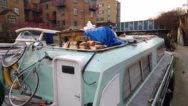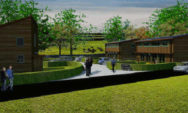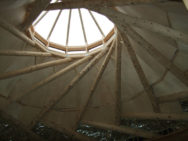
Floating off the grid
Rachel Johnson loves it when people ask her where she lives ”and I say, ‘well…today its Broadway Market but next week its Victoria Park’”. Rachel is one of ten thousand “continuous cruisers” in London – changing moorings every few weeks – the waterborne equivalent of no fixed abode.
As London’s rents and property prices remain high, growing numbers are moving to houseboats on the city’s rivers and canals – aiming to cut their bills in half by living off-grid – right in the centre of the city.
The trend has been steadily increasing in the last decade, with a significant jump in the past five years. According to the The Canal & River Trust, London waterways have seen more than a 50% increase in boat numbers since 2011, with more than 35,000 boats mooring on the canals in 2016. The biggest increase is among so-called “roving” houseboats, where owners don’t buy a fixed mooring but can remain in almost any location for two weeks before they must move on.
More than half of the 1024 boaters surveyed by the Canal River Trust in 2016 claimed that the primary use of their boat was for residential purposes, with the majority of residential boaters aged between 16 and 44 citing high prices and a desire to shift their lifestyle as motivation.
Young professionals
Event manager Rachel Johnson made the move in 2014, trading an apartment in Whitechapel for a roving narrowboat in response to rising prices and an increased noise level.
“I was in a flat in Whitechapel and it got really noisy all the time – there were lots of drunks around – and the rent went up to £800 and I just thought ‘well, this is ridiculous,’” she said.
“I’m now paying half the amount of rent. But at the time I just thought I’d either have to move out of London or move onto a boat, so I rented a boat.”
Rachel had spent a week housesitting for a friend who owned a boat, and, having no issues during her stay and realising the cost benefits, she said it had been an easy decision.
“Living in a houseboat was comfortable right away,” she said. “There is a small adjustment period where you get used to moving around all the time, and getting your belongings to fit in such a small space. But now it’s home.”
Rachel’s cat, Snowball, loves the lifestyle; although she’s fallen in a few times, she doesn’t seem to mind, and struts in and out of the narrowboat as if she owns the place.
Rachel, who cycles to work from wherever she is moored for the fortnight, is one of many in her line of work who live on houseboats. It’s a growing trend for young professionals to make the move, and it isn’t a new idea in the office she works in. However, clients do …





